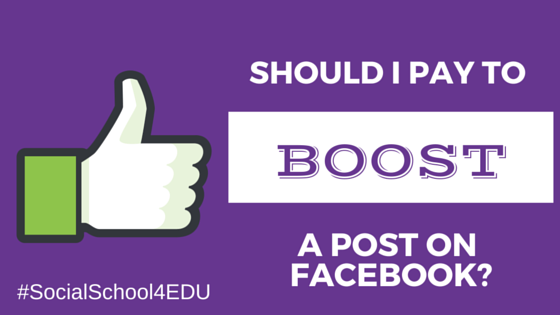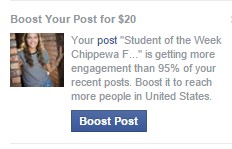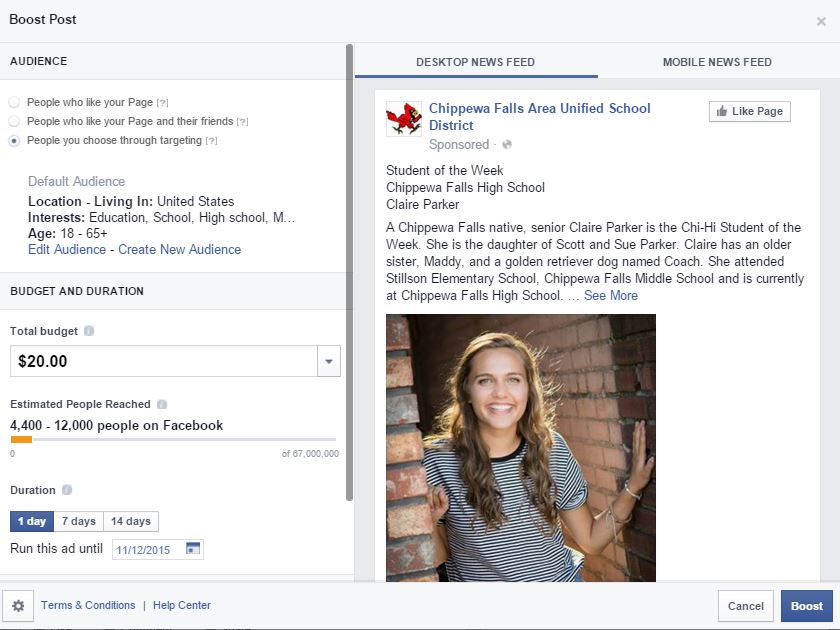Have you ever noticed a gentle nudge from Facebook to spend money? You know, when Facebook tells you that your recent post is getting more engagement than 75% of your recent posts. And for just $20, you can reach even more people. Great deal, right?
Well, it depends.
I have never boosted a post for a school district that I’ve partnered with. And some of those posts have reached tens of thousands of people without spending a dime.
What is a boost?
A boost is basically a payment to Facebook to show your school’s post to more people. The more you pay, the more people you will reach.
With each post you make on your Facebook page, it will not be seen by 100% of your fans. In fact, it is likely that only 10% of your fans are seeing it show up in their news feed. This is because there are so many posts on Facebook, they can’t possibly show each Facebook user every single update from every friend, page, or group they are a part of.
How does a boost work?
By selecting the “boost” button, you have the ability to target certain people by choosing your audience. There are three choices:
Option 1 – You can select people who like your page. This would be trying to reach all 100% of your fans instead of just the 10% referred to above.
Option 2 – You can reach people who like your page plus their friends.
Option 3 – Target specific people. Targeting means that you can select Facebook users based on things such as age, location (within 30 miles of your school), male or female, interests, and more.
No matter what you select, you’ll be able to choose a budget and duration. Facebook bills for this type of activity once a month.
The purpose of a boost for your school may be to promote a fundraiser, gather more fans, or just gain more attention for a specific post made by your school.
Why do some of my posts reach more people than others?
Some posts your school makes reach 37 people, while others reach 3,700. Why such a difference? The reason for this is that Facebook has an algorithm that helps calculate the value that Facebook fans place on your post. If Facebook thinks it is important, it will show it to more people.
The exact algorithm that Facebook uses is ever-changing, but a key indicator is engagement. Engagement is related to the number of likes, shares, and/or comments that a post receives. If a photo you post gets a lot of your fans to hit the like button or comment, “Way to go!” or “Awesome job!” then Facebook is going to show it to more people. For a post with no comments, shares, and only one like, Facebook will think no one really cares about that type of post.
The more you personally like, comment, or share a post made by a specific person or page, the more likely Facebook is to show new posts made by that person or page to you.
So should I boost?
Your post will definitely reach more people if you choose to boost. It really needs to be a decision made by your school district. I’ve seen schools use it to promote additional likes to their page and I think it has been successful, so feel free to try it.
In my opinion, the positive news your school has to tell doesn’t need to be advertised. I think urging current fans to help share posts and suggest them to others is a more economical way of growing your audience. Good news can travel fast when your community gets engaged and helps spread the positive stories of your students.




